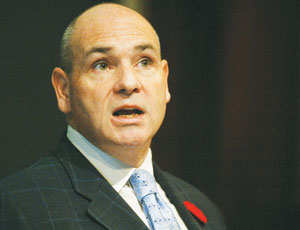Every three years, construction industry attorneys meet to educate themselves on “big-picture” issues affecting the industry. This year, at the triennial conference of the American College of Construction Lawyers, members were told of the challenges facing design and construction from the growing economic impact of dwindling natural resources.

George Smitherman, deputy minister of Ontario’s new Ministry of Energy and Infrastructure, told attendees at the Nov. 5-6 conference at Princeton University, Princeton, N.J., that the province’s push to reduce coal-fired power and ramp up alternative energy is “North America’s largest climate-change initiative.” He said the effort has drawn $3 billion in private investment so far and could create 50,000 new jobs.
Current transportation design standards “won’t be adequate for the temperature rise predicted by the year 2100,” said Michael Meyer, director of the Georgia Transportation Institute at Georgia Tech University. He noted that melting permafrost in Alaska is already forcing the state to reengineer and rebuild its roads.
As an example of reusing materials, R. Joseph Stratman, executive vice president of steelmaker Nucor Corp., says the firm is “the largest recycler in North America, recycling 24 billion tons of scrap annually, including 90% recycled content in steel produced last year.
”Mark Lasswell, president of the transportation and water business group at CH2M Hill, said less than half of the world’s fresh-water supply is “accessible” today. Increasing global urbanization will boost water consumption, putting a strain on existing supplies and forcing development of new ones, he said.
Ashok Gupta, senior energy economist at the Natural Resources Defense Council, briefed members on New York City’s goal to cut carbon emissions by 20% by 2030, with a focus on improving building energy efficiency now. He predicted federal carbon-management legislation in six months, “even if it’s not perfect.”





Post a comment to this article
Report Abusive Comment